1.Identification
1.1 GHS Product identifier
| Product name | omethoate |
|---|
1.2 Other means of identification
| Product number | - |
|---|---|
| Other names | MODERN |
1.3 Recommended use of the chemical and restrictions on use
| Identified uses | For industry use only. |
|---|---|
| Uses advised against | no data available |
1.4 Supplier's details
| Company | MOLBASE (Shanghai) Biotechnology Co., Ltd. |
|---|---|
| Address | Floor 4 & 5, Building 12, No. 1001 North Qinzhou Road, Xuhui District, Shanghai, China |
| Telephone | +86(21)64956998 |
| Fax | +86(21)54365166 |
1.5 Emergency phone number
| Emergency phone number | +86-400-6021-666 |
|---|---|
| Service hours | Monday to Friday, 9am-5pm (Standard time zone: UTC/GMT +8 hours). |
2.Hazard identification
2.1 Classification of the substance or mixture
Acute toxicity - Oral, Category 3
Acute toxicity - Dermal, Category 4
Hazardous to the aquatic environment, short-term (Acute) - Category Acute 1
2.2 GHS label elements, including precautionary statements
| Pictogram(s) | 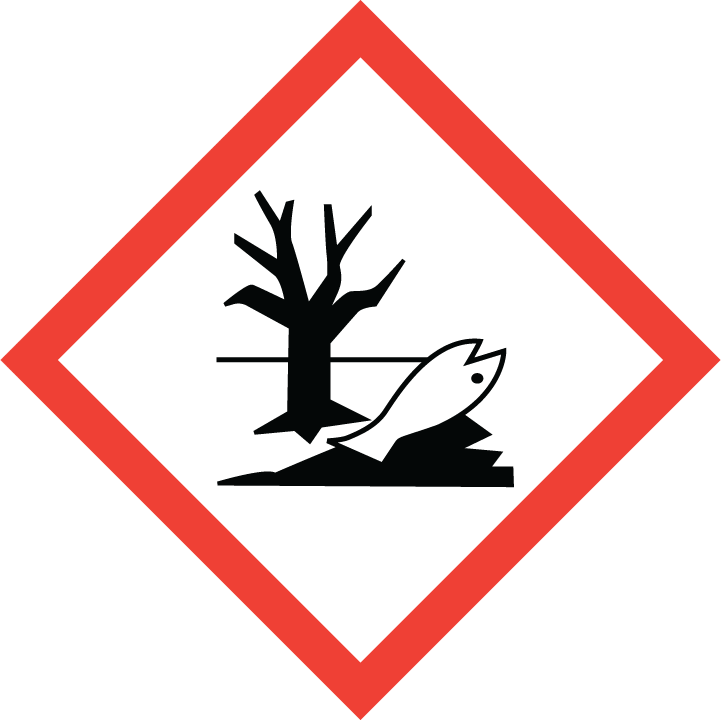 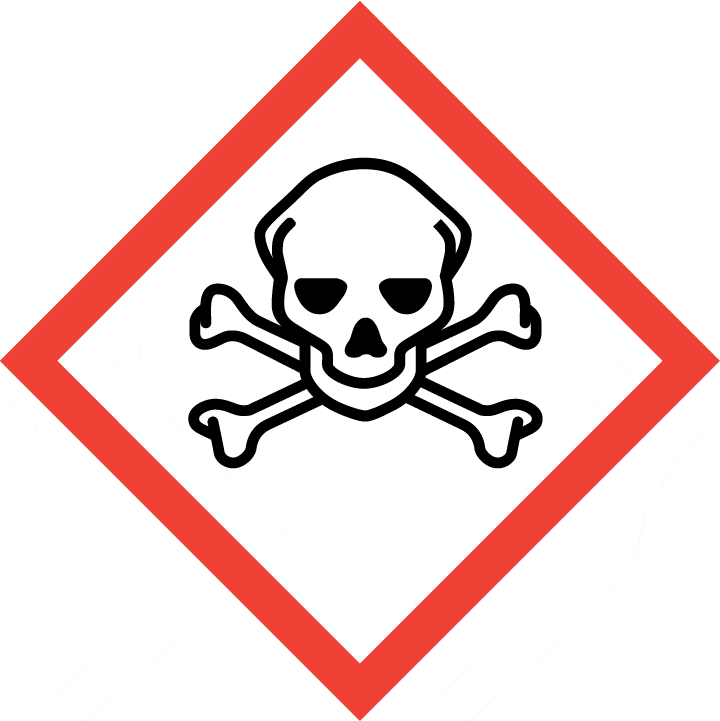 |
|---|---|
| Signal word | Danger |
| Hazard statement(s) | H301 Toxic if swallowed H312 Harmful in contact with skin H400 Very toxic to aquatic life |
| Precautionary statement(s) | |
| Prevention | P264 Wash ... thoroughly after handling. P270 Do not eat, drink or smoke when using this product. P280 Wear protective gloves/protective clothing/eye protection/face protection. P273 Avoid release to the environment. |
| Response | P301+P310 IF SWALLOWED: Immediately call a POISON CENTER/doctor/… P321 Specific treatment (see ... on this label). P330 Rinse mouth. P302+P352 IF ON SKIN: Wash with plenty of water/... P312 Call a POISON CENTER/doctor/…if you feel unwell. P362+P364 Take off contaminated clothing and wash it before reuse. P391 Collect spillage. |
| Storage | P405 Store locked up. |
| Disposal | P501 Dispose of contents/container to ... |
2.3 Other hazards which do not result in classification
none
3.Composition/information on ingredients
3.1 Substances
| Chemical name | Common names and synonyms | CAS number | EC number | Concentration |
|---|---|---|---|---|
| omethoate | omethoate | 1113-02-6 | none | 100% |
4.First-aid measures
4.1 Description of necessary first-aid measures
General advice
Consult a physician. Show this safety data sheet to the doctor in attendance.
If inhaled
If breathed in, move person into fresh air. If not breathing, give artificial respiration. Consult a physician.
In case of skin contact
Wash off with soap and plenty of water. Consult a physician.
In case of eye contact
Rinse thoroughly with plenty of water for at least 15 minutes and consult a physician.
If swallowed
Never give anything by mouth to an unconscious person. Rinse mouth with water. Consult a physician.
4.2 Most important symptoms/effects, acute and delayed
no data available
4.3 Indication of immediate medical attention and special treatment needed, if necessary
A comatose patient who is diaphoretic, has pinpoint pupils and the odor of an insecticide on clothing or breath, and is noted to have muscle fasciculations represents the classic presentation of organophosphate poisoning. ... Specific steps in management include the following. 1. Decontamination. ... 2 Airway. Establish an airway if necessary. ... 3. Respiratory Status. Respiratory distress, in fact, is commonly found in these patients from multiple causes. ... 4. Cardiac Monitoring. ... 5. Cholinesterase Level. ... 6. Pralidoxime. Pralidoxime is the treatment of choice for organophosphate poisoning and should be used for nearly all patients with clinically significant orgnophosphate poisoning,particularly whose patients with muscular fasciculations and weakness. ... 7. Atropine. Atropine is the physiologic antidote for organophosphate poisoning. A trial dose of atropine should be instituted on clinical ground when one suspects organophosphate intoxication. /Organophosphate poisoning/
5.Fire-fighting measures
5.1 Extinguishing media
Suitable extinguishing media
If material on fire or involved in fire: Do not extinguish fire unless flow can be stopped or safely confined. Use water in flooding quantities as fog. Solid streams of water may be ineffective. Cool all affected containers with flooding quantities of water. Apply water from as far a distance as possible. Use "alcohol" foam, carbon dioxide or dry chemical. /Organophosphorus pesticides, liquid, NOS/
5.2 Specific hazards arising from the chemical
no data available
5.3 Special protective actions for fire-fighters
Wear self-contained breathing apparatus for firefighting if necessary.
6.Accidental release measures
6.1 Personal precautions, protective equipment and emergency procedures
Use personal protective equipment. Avoid dust formation. Avoid breathing vapours, mist or gas. Ensure adequate ventilation. Evacuate personnel to safe areas. Avoid breathing dust. For personal protection see section 8.
6.2 Environmental precautions
Prevent further leakage or spillage if safe to do so. Do not let product enter drains. Discharge into the environment must be avoided.
6.3 Methods and materials for containment and cleaning up
Environmental considerations- land spill: Dig a pit, pond, lagoon, holding area to contain liquid or solid material. /SRP: If time permits, pits, ponds, lagoons, soak holes, or holding areas should be sealed with an impermeable flexible membrane liner./ Dike surface flow using soil, sand bags, foamed polyurethane, or foamed concrete. Absorb bulk liquid with fly ash, cement powder, or commercial sorbents. /Organophosphorus pesticides, liquid and solid, NOS/
7.Handling and storage
7.1 Precautions for safe handling
Avoid contact with skin and eyes. Avoid formation of dust and aerosols. Avoid exposure - obtain special instructions before use.Provide appropriate exhaust ventilation at places where dust is formed. For precautions see section 2.2.
7.2 Conditions for safe storage, including any incompatibilities
Rooms used for storage only should be soundly constructed & fitted with secure locks. Floors should be kept clear & pesticides clearly identified. If repacking is carried out in storage rooms, adequate light should be available; floors should be impervious & sound ... . /Pesticides/
8.Exposure controls/personal protection
8.1 Control parameters
Occupational Exposure limit values
no data available
Biological limit values
no data available
8.2 Appropriate engineering controls
Handle in accordance with good industrial hygiene and safety practice. Wash hands before breaks and at the end of workday.
8.3 Individual protection measures, such as personal protective equipment (PPE)
Eye/face protection
Safety glasses with side-shields conforming to EN166. Use equipment for eye protection tested and approved under appropriate government standards such as NIOSH (US) or EN 166(EU).
Skin protection
Wear impervious clothing. The type of protective equipment must be selected according to the concentration and amount of the dangerous substance at the specific workplace. Handle with gloves. Gloves must be inspected prior to use. Use proper glove removal technique(without touching glove's outer surface) to avoid skin contact with this product. Dispose of contaminated gloves after use in accordance with applicable laws and good laboratory practices. Wash and dry hands. The selected protective gloves have to satisfy the specifications of EU Directive 89/686/EEC and the standard EN 374 derived from it.
Respiratory protection
Wear dust mask when handling large quantities.
Thermal hazards
no data available
9.Physical and chemical properties
| Physical state | Colorless liquid. Mercaptan-like odor. |
|---|---|
| Colour | Colorless liquid |
| Odour | Mercaptan-like odor |
| Melting point/ freezing point | -28oC |
| Boiling point or initial boiling point and boiling range | 135oC |
| Flammability | no data available |
| Lower and upper explosion limit / flammability limit | no data available |
| Flash point | 100oC |
| Auto-ignition temperature | no data available |
| Decomposition temperature | no data available |
| pH | no data available |
| Kinematic viscosity | no data available |
| Solubility | Readily soluble in alcohols, acetone, and many hydrocarbons. Slightly soluble in diethyl ether. Almost insoluble in petroleum ether. |
| Partition coefficient n-octanol/water (log value) | log Kow = -0.74 at 20°C |
| Vapour pressure | 2.48X10-5 mm Hg at 20°C |
| Density and/or relative density | 1.27 g/cm3 |
| Relative vapour density | no data available |
| Particle characteristics | no data available |
10.Stability and reactivity
10.1 Reactivity
no data available
10.2 Chemical stability
Hydrolyzed in alkaline media; relatively slowly hydrolyzed in acidic media.
10.3 Possibility of hazardous reactions
no data available
10.4 Conditions to avoid
no data available
10.5 Incompatible materials
... Incompatible with alkaline materials.
10.6 Hazardous decomposition products
When heated to decomposition it emits very toxic fumes of /nitrogen oxides, phosphorous oxides, and sulfur oxides/.
11.Toxicological information
Acute toxicity
- Oral: LD50 Rat oral 25 mg/kg
- Inhalation: LC50 Rat male inhalation >1.5 mg/L/1 hr
- Dermal: LD50 Rat percutaneous 700 mg/kg/7 day
Skin corrosion/irritation
no data available
Serious eye damage/irritation
no data available
Respiratory or skin sensitization
no data available
Germ cell mutagenicity
no data available
Carcinogenicity
no data available
Reproductive toxicity
no data available
STOT-single exposure
no data available
STOT-repeated exposure
no data available
Aspiration hazard
no data available
12.Ecological information
12.1 Toxicity
- Toxicity to fish: EC50; Species: Oncorhynchus mykiss (Rainbow trout, age 6 months); Conditions: freshwater; static, 12°C, hardness 98.45 mg/L CaCO3, dissolved oxygen >6.5 mg/L; Concentration: 8.7 mg/L for 48 hr; Effect: intoxication, immobilization /96.3% formulated product
- Toxicity to daphnia and other aquatic invertebrates: LC50; Species: Daphnia magna (Water flea); Conditions: freshwater; renewal, 19°C, pH 7.9, hardness 98.45 mg/L CaCO3, dissolved oxygen >6.5 mg/L; Concentration: 4.2 ug/L for 26 days /96.3% formulated product
- Toxicity to algae: no data available
- Toxicity to microorganisms: no data available
12.2 Persistence and degradability
AEROBIC: Biodegradation of omethoate in soil may be an important fate process in soil based on rapid rates for analogous dimethoate(SRC); dimethoate exhibited 77% degradation in clay loam soil in 2 wks compared to 18 and 20% degradation in the same soil that had been autoclaved or irradiated(1). Omethoate is very rapidly metabolized in soil to CO2(2). Dimethoate exhibited half-lives of 171, 173 and 219 days for river water, filtered river water and sea water, respectively(3), suggesting biodegradation of omethoate in water may be an important environmental fate process(SRC). A predictive method based upon evaluated biodegradation data and the fact that omethoate contains a phosphate ester substructure predicts that omethoate has a high probability of biodegrading in the environment(4).
12.3 Bioaccumulative potential
An estimated BCF of 3 was calculated in fish for omethoate(SRC), using a log Kow of -0.74(1) and a regression-derived equation(2). According to a classification scheme(3), this BCF suggests the potential for bioconcentration in aquatic organisms is low(SRC).
12.4 Mobility in soil
The Koc of omethoate is estimated as 9.4(SRC), using a log Kow of -0.74(1) and a regression-derived equation(2). According to a classification scheme(3), this estimated Koc value suggests that omethoate is expected to have very high mobility in soil(SRC). Aged leaching studies revealed that metabolites have only a low leaching potential(1).
12.5 Other adverse effects
no data available
13.Disposal considerations
13.1 Disposal methods
Product
The material can be disposed of by removal to a licensed chemical destruction plant or by controlled incineration with flue gas scrubbing. Do not contaminate water, foodstuffs, feed or seed by storage or disposal. Do not discharge to sewer systems.
Contaminated packaging
Containers can be triply rinsed (or equivalent) and offered for recycling or reconditioning. Alternatively, the packaging can be punctured to make it unusable for other purposes and then be disposed of in a sanitary landfill. Controlled incineration with flue gas scrubbing is possible for combustible packaging materials.
14.Transport information
14.1 UN Number
| ADR/RID: UN3018 | IMDG: UN3018 | IATA: UN3018 |
14.2 UN Proper Shipping Name
| ADR/RID: ORGANOPHOSPHORUS PESTICIDE, LIQUID, TOXIC |
| IMDG: ORGANOPHOSPHORUS PESTICIDE, LIQUID, TOXIC |
| IATA: ORGANOPHOSPHORUS PESTICIDE, LIQUID, TOXIC |
14.3 Transport hazard class(es)
| ADR/RID: 6.1(a) | IMDG: 6.1(a) | IATA: 6.1(a) |
14.4 Packing group, if applicable
| ADR/RID: II | IMDG: II | IATA: II |
14.5 Environmental hazards
| ADR/RID: yes | IMDG: yes | IATA: yes |
14.6 Special precautions for user
no data available
14.7 Transport in bulk according to Annex II of MARPOL 73/78 and the IBC Code
no data available
15.Regulatory information
15.1 Safety, health and environmental regulations specific for the product in question
| Chemical name | Common names and synonyms | CAS number | EC number |
|---|---|---|---|
| omethoate | omethoate | 1113-02-6 | none |
| European Inventory of Existing Commercial Chemical Substances (EINECS) | Listed. | ||
| EC Inventory | Listed. | ||
| United States Toxic Substances Control Act (TSCA) Inventory | Not Listed. | ||
| China Catalog of Hazardous chemicals 2015 | Listed. | ||
| New Zealand Inventory of Chemicals (NZIoC) | Listed. | ||
| Philippines Inventory of Chemicals and Chemical Substances (PICCS) | Not Listed. | ||
| Vietnam National Chemical Inventory | Listed. | ||
| Chinese Chemical Inventory of Existing Chemical Substances (China IECSC) | Listed. | ||
16.Other information
Information on revision
| Creation Date | Aug 16, 2017 |
|---|---|
| Revision Date | Aug 16, 2017 |
Abbreviations and acronyms
- CAS: Chemical Abstracts Service
- ADR: European Agreement concerning the International Carriage of Dangerous Goods by Road
- RID: Regulation concerning the International Carriage of Dangerous Goods by Rail
- IMDG: International Maritime Dangerous Goods
- IATA: International Air Transportation Association
- TWA: Time Weighted Average
- STEL: Short term exposure limit
- LC50: Lethal Concentration 50%
- LD50: Lethal Dose 50%
- EC50: Effective Concentration 50%
References
- IPCS - The International Chemical Safety Cards (ICSC), website: http://www.ilo.org/dyn/icsc/showcard.home
- HSDB - Hazardous Substances Data Bank, website: https://toxnet.nlm.nih.gov/newtoxnet/hsdb.htm
- IARC - International Agency for Research on Cancer, website: http://www.iarc.fr/
- eChemPortal - The Global Portal to Information on Chemical Substances by OECD, website: http://www.echemportal.org/echemportal/index?pageID=0&request_locale=en
- CAMEO Chemicals, website: http://cameochemicals.noaa.gov/search/simple
- ChemIDplus, website: http://chem.sis.nlm.nih.gov/chemidplus/chemidlite.jsp
- ERG - Emergency Response Guidebook by U.S. Department of Transportation, website: http://www.phmsa.dot.gov/hazmat/library/erg
- Germany GESTIS-database on hazard substance, website: http://www.dguv.de/ifa/gestis/gestis-stoffdatenbank/index-2.jsp
- ECHA - European Chemicals Agency, website: https://echa.europa.eu/


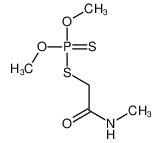










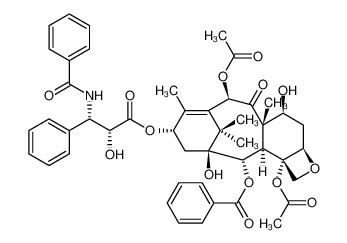

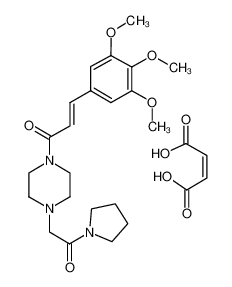
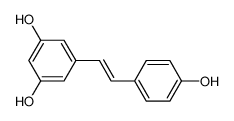

-
-

-
-
-

-
-
-

-
-
-

-
-
-

-
-
-

-
-
-

-
-
-

-
-
-

-
-
-

-
More Suppliers>>Hangzhou J&H Chemical Co., Ltd.
CHINA
Purity: >97%
Lead Time: 7 Day(s)
Price: -
Skyrun Industrial Co., Limited
CHINA
Purity: 99%
Lead Time: 7 Day(s)
Price: -
Hangzhou Bingochem Co., Ltd.
CHINA
Purity: 98%
Lead Time: 7 Day(s)
Price: -
Guizhou Dida science and technology co., LTD
CHINA
Purity: 98%
Lead Time: 3 Day(s)
Price: -
Shanghai Yusi Chemical Co., Ltd.
CHINA
Purity: 100%
Lead Time: 10 Day(s)
Price: Min $26.5 /ml
Saan Chemical Technology (Shanghai) Co., Ltd.
CHINA
Purity: 96%
Lead Time: 7 Day(s)
Price: Min $79.83 /mg
Shanghai Aladdin Bio-Chem Technology Co.,LTD
CHINA
Purity: 5%
Lead Time: 56 Day(s)
Price: Min $26.5 /ml
Chengdu SinoStandards Bio-Tech Co.,Ltd.
CHINA
Purity: 98%
Lead Time: 7 Day(s)
Price: -
Zhejiang Chemicals Import & Export Corporation
CHINA
Purity: 96%
Lead Time: 7 Day(s)
Price: -
Hunan Dejia Biochemical Tech. Co., Ltd.
CHINA
Purity: 98%
Lead Time: 14 Day(s)
Price: -